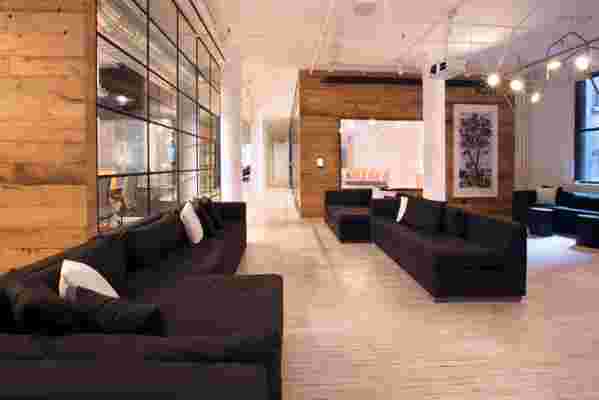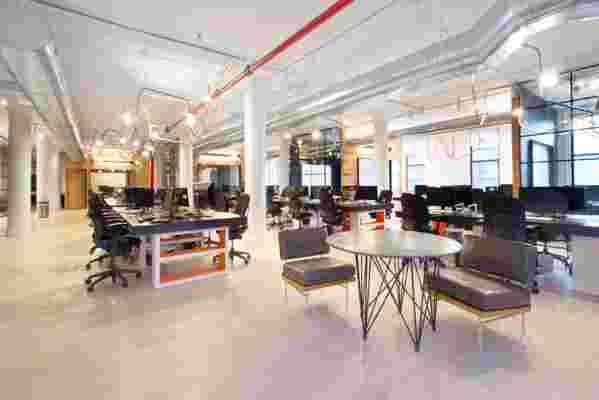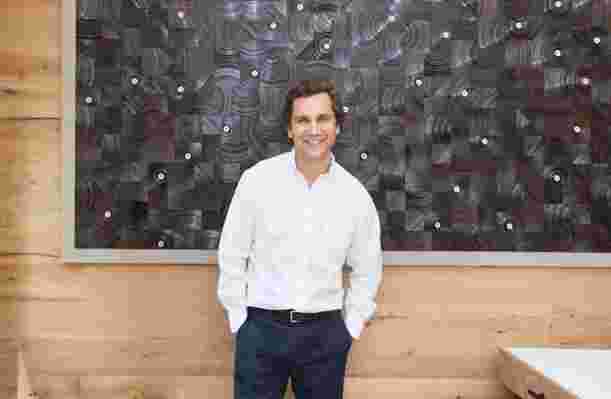October 08,2022
Step Inside Kargo’s New Nate Berkus–Designed Office
by David Stewart
When you’re in the business of helping brands communicate ideas that resonate with both clarity and creativity, you want to be sure that your own story rings loud and clear. For Harry Kargman, the founder and CEO of the pioneering mobile advertising firm Kargo, the move to a new office near Union Square in Manhattan provided an ideal opportunity to project the company’s own avant-garde ethos in three fantastic dimensions. “I wanted to send the message that great design is essential to everything we do at Kargo—that it’s part of our DNA,” Kargman says. “When a client walks through the door, they should know that we set the quality bar at the very highest level.”
To interpret that concept as eloquently and imaginatively as possible, Kargman called upon designer Nate Berkus and architectural designer Ahmad Sardar-Afkhami. “The space had to be sleek and modern but also warm and organic. It needed to express Kargo’s expertise in cutting-edge communication technology as well its engagement in contemporary culture,” Berkus explains.
In practical terms, that précis translated into a vision of glass-and-steel modernism sufficiently nuanced to embrace natural materials, bespoke details redolent of handcraftsmanship, and an intriguing collection of contemporary art curated by Kargman specifically for the new offices. “We wanted to keep some of the grittiness of the industrial space, but temper it with elements like reclaimed wood used in a very clean, restrained way—not something hokey that looks like a barbecue joint in Brooklyn,” says Sardar-Afkhami.
The felicitous collision of high tech and high touch is manifested with particular brio in the office’s main conference space, where a live-edge wood bench backs up to a steel-framed glass wall that evokes the attenuated elegance of 1930s International Style modernism. The room also includes bespoke desks fabricated by Berkus’s cabinetmakers and custom-made serpentine overhead lighting fixtures by Rich Brilliant Willing, hallmarks of the team's design for the 12,000-square-foot office space.
Discreetly integrated throughout the floor is technology that allows Kargo’s 120 employees to manage heating and cooling, lighting, and even ambient music from their cell phones and iPads. The tech story, however, takes a backseat to the art program in terms of visual impression. “I’ve always had a passion for art,” Kargman notes. “I have particular tastes, and I’m not afraid to spend money on things that might never appreciate in value.” Given the roster of artists represented—among them Mark Flood, Gregor Hildebrandt, William Kentridge, Dean Sameshima, Adam Fuss, and Mike Bouchet—Kargman has little to worry on the value front.
“The art really was the final layer in telling the Kargo story. This project was never just about a bunch of desks in an office,” Berkus says. His client seconds the notion: “Nate and Ahmad have given us a space that shows you can be edgy, irreverent, and forward-looking and still deliver premium quality. We wanted the office to be a rich, beautiful experience. That’s what we offer our clients, and that’s how we want to work.”









